When talking about succulents, most people think they are small, low-maintenance plants that can be grown in a wide variety of conditions.
While that is true for some, others require moderate care and only grow tall if grown in an environment similar to their natural habitat.
Once they grow tall, succulents can completely change your space’s look with their different-patterned leaves and vibrant colors.
They help make your house look inviting and expansive, even if it has a small area.
Finding succulents is easy, but finding succulents that grow tall is a little tricky.
I have put together a list of ten succulent plants that will have you obsessing over them to make things easier.
Table of Contents
Tall Succulents Types
- Adenium Obesum (Desert Rose)
- Aeonium Arboreum
- Agave Americana (Century plant)
- Austrocylindropuntia Subulata (Eve’s needle)
- Crassula Ovata (Jade Plant)
- Cyphostemma Juttae
- Euphorbia Milii (Crown of Thorns)
- Kalanchoe Beharensis (Felt Bush, Elephant’s Ears)
- Monadenium Magnificum
- Pachypodium Lamerei (Madagascar Palm)
Adenium Obesum (Desert Rose)
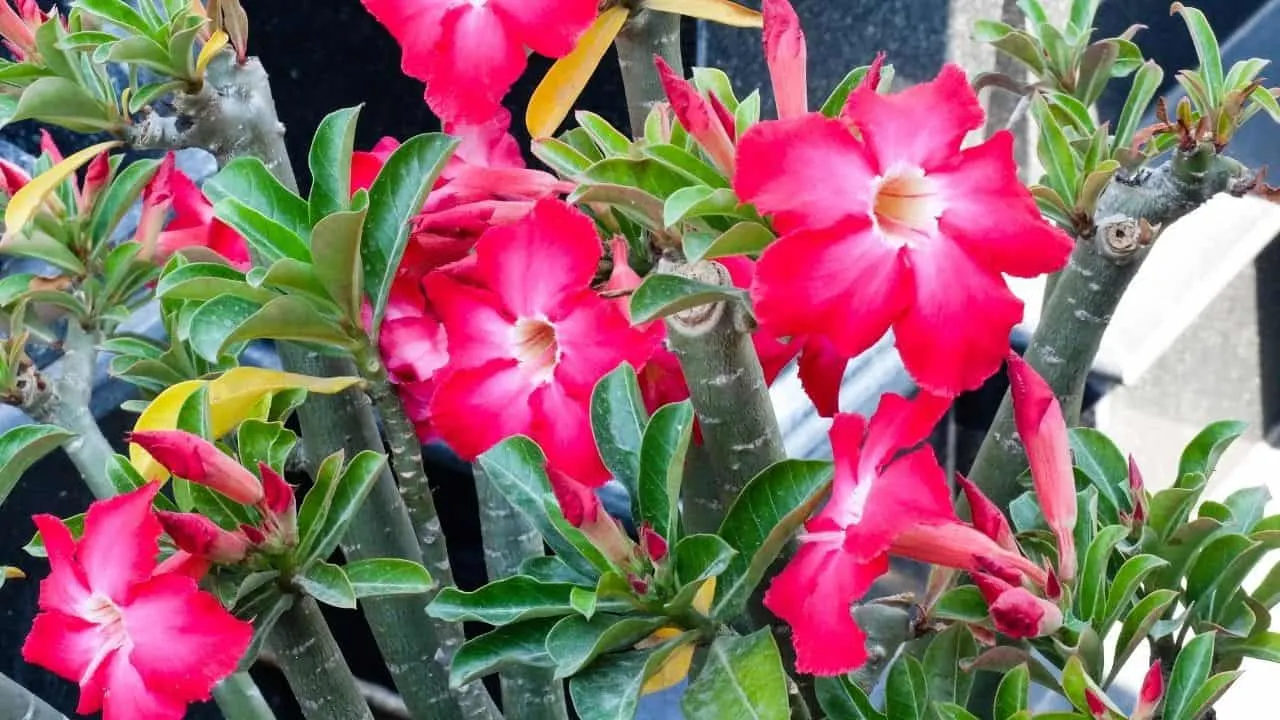
Naturally found on rocky slopes and outcroppings in the wild, the Adenium Obesum is a treat for sore eyes. It is a beautiful succulent that grows to heights of around 4 feet (1.2 m).
With its thick, fleshy leaves, it stores water for a considerable amount of time. When given the right care, it gives rise to stunning blooms that may be pale pink, dark red, or any shade in between.
This beauty is recognized by its thick bottom covered by spines. Its tall columnar stem supports large, round leaves, stunning colorful blooms, and reddish or white brown seed pots.
The Adenium Obesum plant will not trouble you much; it requires little sunlight and minimum space.
It is ideal for gardeners that wish to grow succulents inside their homes without allocating too much room for them. It does well as a table as well as a floor plant.
However, you will have to repot it every two years to maintain its shape.
If left in the same pot, they lose the usual upright form due to fast blooming, especially when developing outdoors. Replant the Adenium Obesum in summers (mid-July).
- Scientific name: Adenium Obesum
- Common name: Desert Rose
- Light requirements: Low
- Height: 4 feet (1.2 m)
- Nutrition: Low
- Growth rate: Fast or moderate
- Care: Low
Aeonium Arboreum
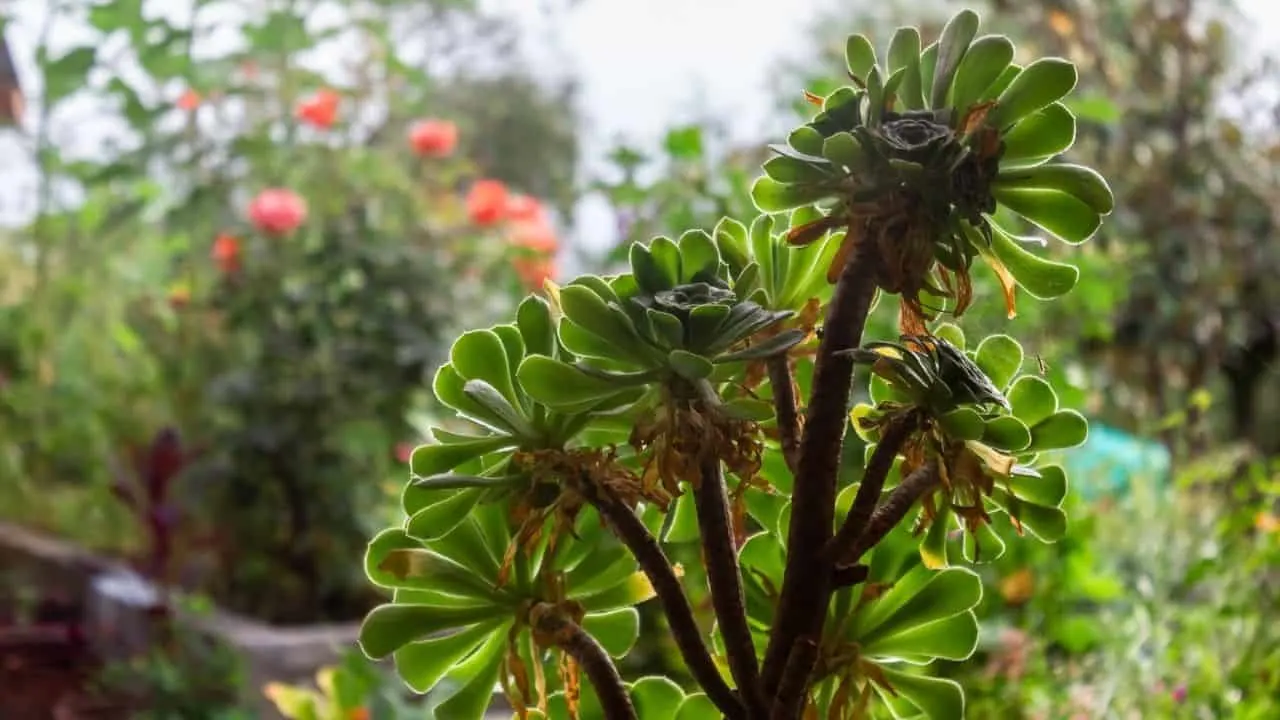
A tall, elegant succulent, the Aeonium Arboreum grows about 3 feet (90 cm) in height. It has dark green leaves enhanced by light green stripes running all along the surfaces.
The plant gives rise to small clusters of pink or white flowers in the summers that resemble stars.
The Aeonium Arboreum plant produces big red berries that hang downwards from long stalks during the colder months.
It does fairly well outdoors, as it needs significant sun exposure. If indoors, place it next to a sunny window or a door that is sunny all year long.
The Aeonium Arboreum plant likes well-draining soils and cannot tolerate chilly weather for long.
Therefore, if the temperatures drop below 32 degrees Fahrenheit (0 degrees Celsius), bring this beauty inside the house.
- Scientific name: Aeonium Arboreum
- Common name: Aeonium Arboreum
- Light requirements: High
- Height: 3 feet (90 cm)
- Nutrition: Low
- Growth rate: Low to moderate
- Care: Low to moderate
Agave Americana (Century plant)
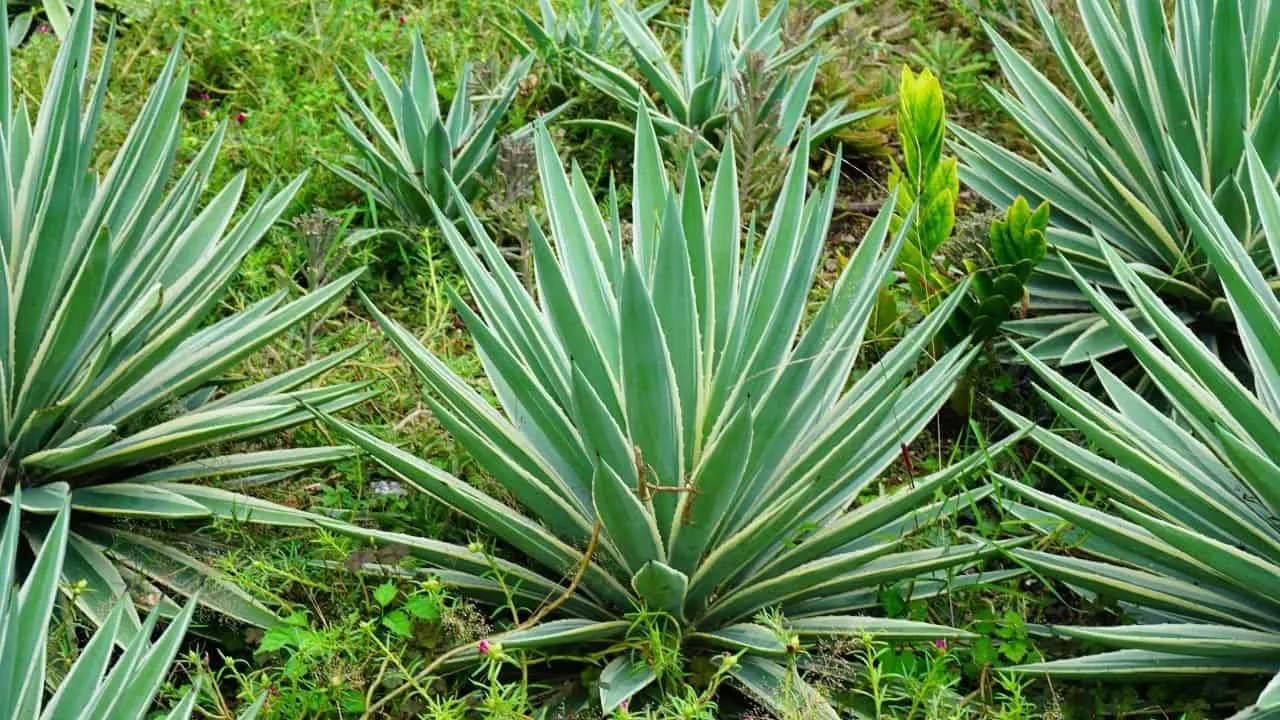
Also known as the century plant, Agave Americana is listed amongst the most manageable succulents. It reaches a height of about 5 feet (1.5 m) and is characterized by its long, thin leaves.
It produces numerous small flowers that appear in clusters from an inflorescence stalk in the growing seasons. Its sap has sugar, making Agave Americana quite popular for producing tequila.
The Agave Americana plant grows best under partial or full sun and in loose, well-aerated soils. The filtered sunlight allows it to perform all its vital functions, including photosynthesis.
Furthermore, it goes dormant if not given enough water, especially after blooming in the summer season.
Keep this beauty in its desired settings, but it is a lot more prone to root rot than other varieties. When the temperature scales drop below the freezing point, bring Agave Americana inside.
- Scientific name: Agave Americana
- Common name: Century plant
- Light requirements: Moderate to high
- Height: 5 feet (1.5 m)
- Nutrition: Low
- Growth rate: Low to moderate
- Care: Moderate to high
Austrocylindropuntia Subulata (Eve’s Needle)
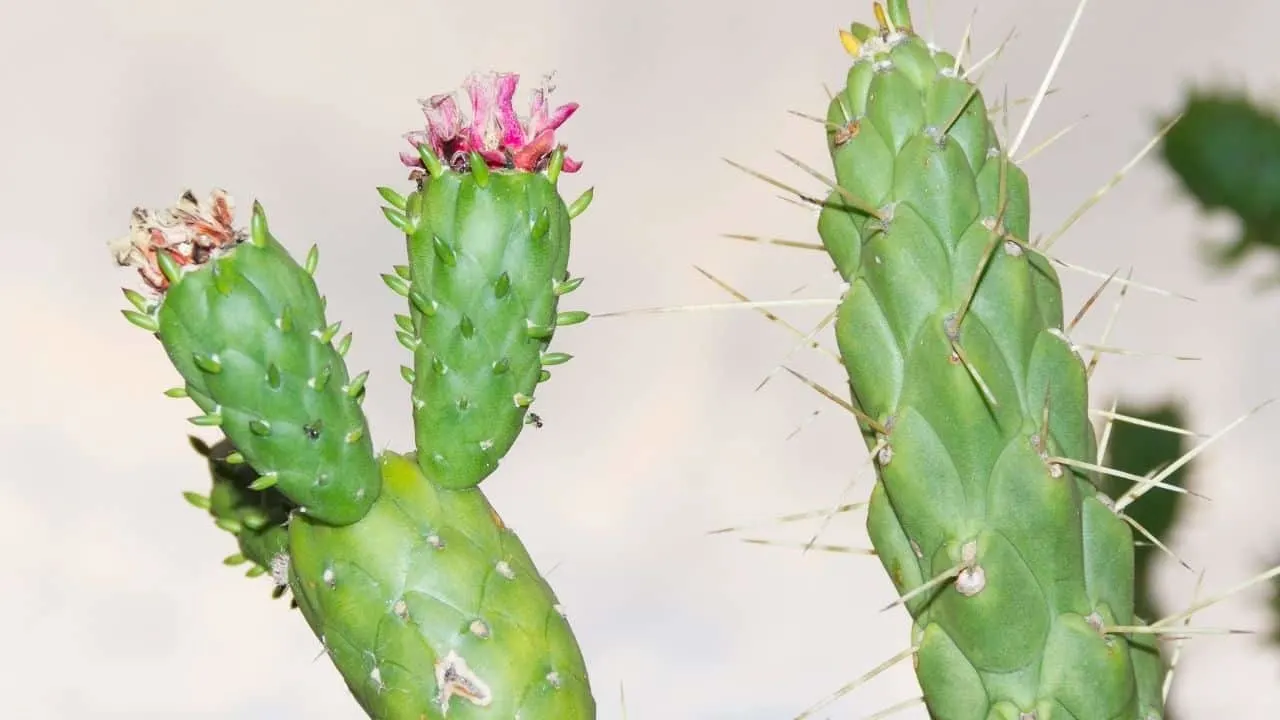
Another popular succulent is the Austrocylindropuntia Subulata (Eve’s needle). It reaches a whooping height of about 13 feet (4 m) during its active growth seasons.
It looks pretty attractive with its slender, long leaves and sharp-looking clusters at the tips.
In the summertime, it gives rise to wide pink flowers that greatly improve its overall look. It is a columnar succulent that favors dry conditions and well-draining soils.
However, it will also manage temporary flooding.
The Austrocylindropuntia Subulata is drought-resistant and should only be watered a few times a month. With a robust nature, it tolerates a wide range of temperatures.
- Scientific name: Austrocylindropuntia Subulata
- Common name: Eve’s needle
- Light requirements: Moderate to high
- Height: 13 feet (4 m)
- Nutrition: Low
- Growth rate: moderate to high
- Care: Low
Crassula Ovata (Jade Plant)
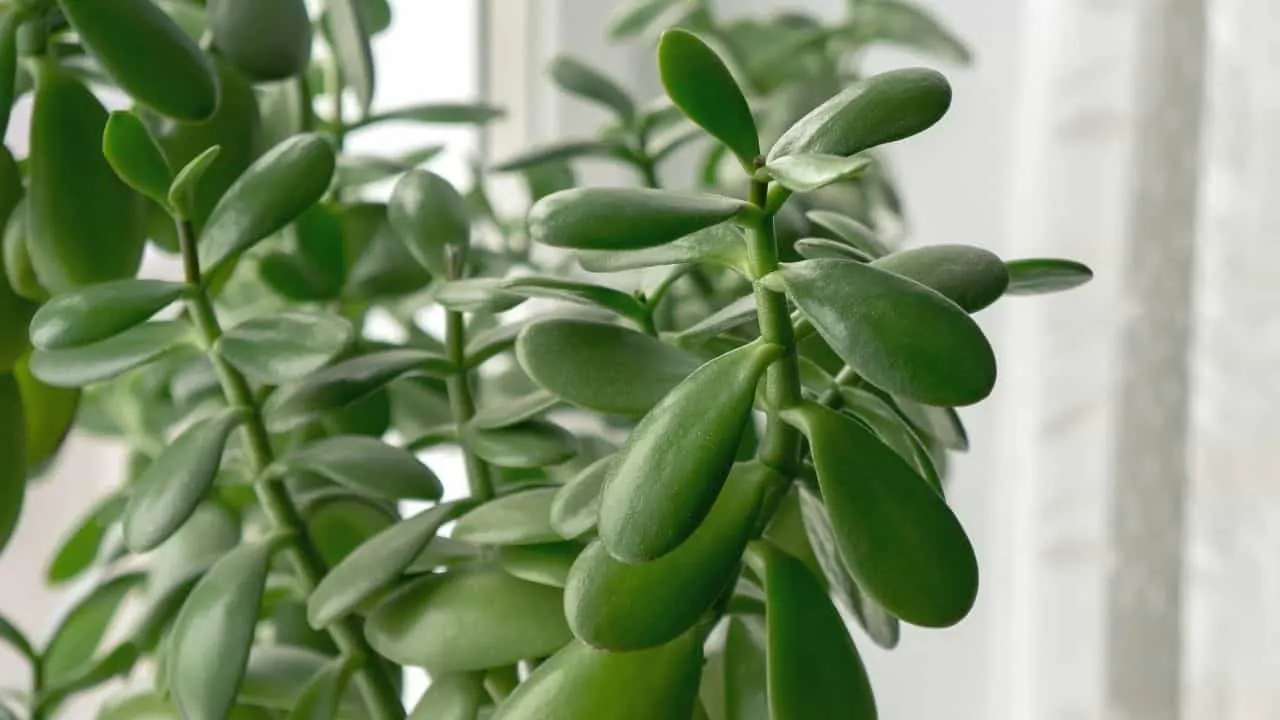
Next is the Crassula Ovata, also called the Jade plant. If you are looking for a plant to make your space look sophisticated and posh, Crassula Ovata is your best friend.
It has thick, tall branches that slightly curve at various angles, sprawl, and then droop.
With the right care, the leaves are oval-shaped and grow to about 12 inches (30 cm). The plant has an overall rough surface texture due to its leaf ridges, which make it perfect for hanging.
The Crassula Ovata plant grows to a height of about 15 feet (5 m) in ideal settings, making it one of the most popular and tallest succulents on this list.
Its popular name, Jade plant, comes from its jade-like resemblance.
It needs moderate to high sunlight to grow healthily. Thus, either place it outdoors or near a sunny window indoors.
However, some commercial varieties also thrive in low light, so I suggest you inquire about the light requirements when buying it.
Although succulent, it does need relatively more water than the others. Therefore, water it every week or so, especially when the climate is super dry.
- Scientific name: Crassula Ovata
- Common name: Jade plant
- Light requirements: Moderate to high
- Height: 15 feet (5 m)
- Nutrition: Low to moderate
- Growth rate: Fast or Moderate
- Care: Moderate
Cyphostemma Juttae

A native of South Africa, the Cyphostemma Juttae is another beautiful succulent. It reaches 6 feet (2 m) in height when given the right care.
It has a tall stem with several leaves arranged around it in spirals.
This beauty gives rise to greenish-yellow flowers in the summertime. Its name, Cyphes, is a Greek word, meaning trunk or stump.
Cyphostemma Juttae is often utilized as an ornamental decoration due to its striking appearance among other plants.
The Cyphostemma Juttae plant is ideal for places with high temperatures and low water tables.
So, if you are on the hunt for a unique plant that can easily thrive in tough conditions, this makes the ideal choice.
- Scientific name: Cyphostemma Juttae
- Common name: Bastard cobas, tree grape, Namibian grape, wild grape, and Droog-my-keel
- Light requirements: Moderate to high
- Height: 6 feet (2 m)
- Nutrition: Low to moderate
- Growth rate: Fast or moderate
- Care: Moderate
Euphorbia Milii (Crown of Thorns)
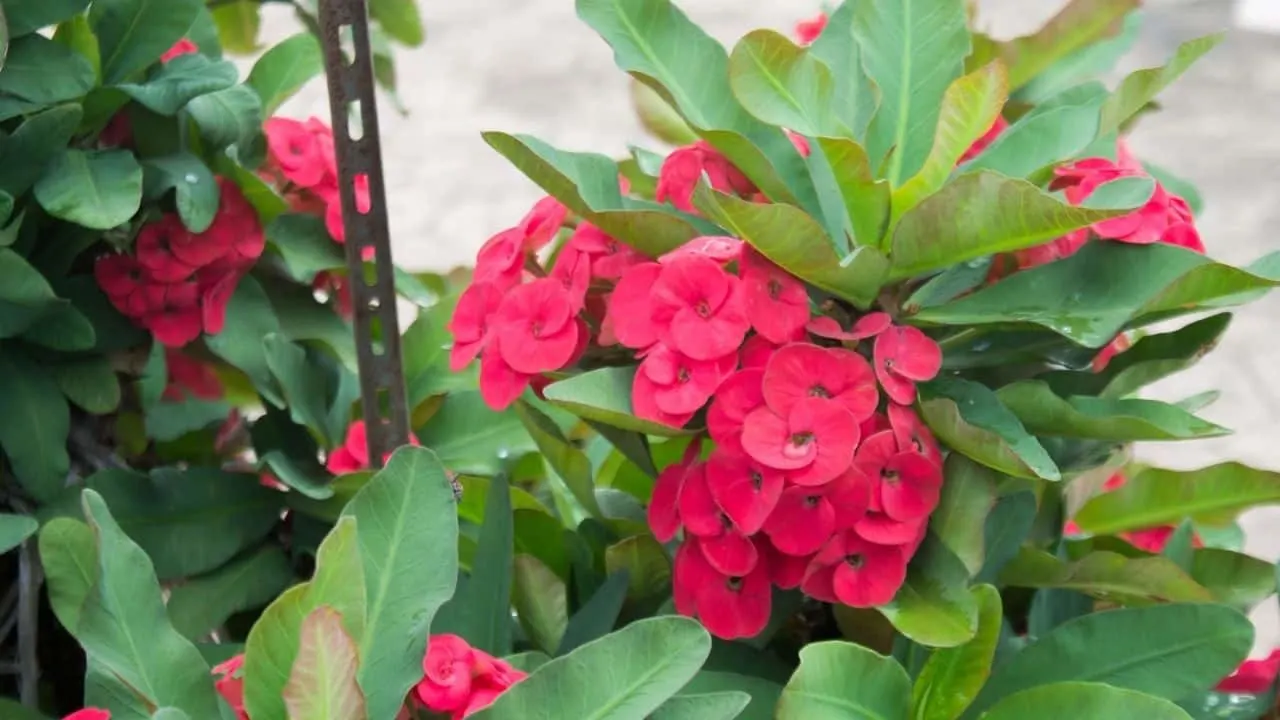
Next up, we have Euphorbia Milii or Crown of Thorns. The name gives away its appearance because it bears several long spines all along the stems and succulent, fleshy leaves.
When fully mature, Euphorbia Milli reaches a height of about 6 feet (2 m) and supports branches extending up to 8 inches length-wise and 4 inches width-wise.
Moreover, it grows small red flowers that aren’t as showy as the leaves.
It is a low-maintenance plant, requiring little water and partial sunlight. This beauty is ideal for hot, sunny areas. However, it is better to put it under partial light during the summer season.
To maintain shape, prune Euphorbia Milii every time its vines grow erratic.
Also, cut the branches a little to about two inches from a node; this encourages new growth and prevents the plant from getting excessively tall.
- Scientific name: Euphorbia Milii
- Common name: Crown of Thorns
- Light requirements: Low to moderate
- Height: 6 feet (2 m)
- Nutrition: Low
- Growth rate: Low
- Care: Low
Kalanchoe Beharensis (Felt Bush, Elephant’s Ears)
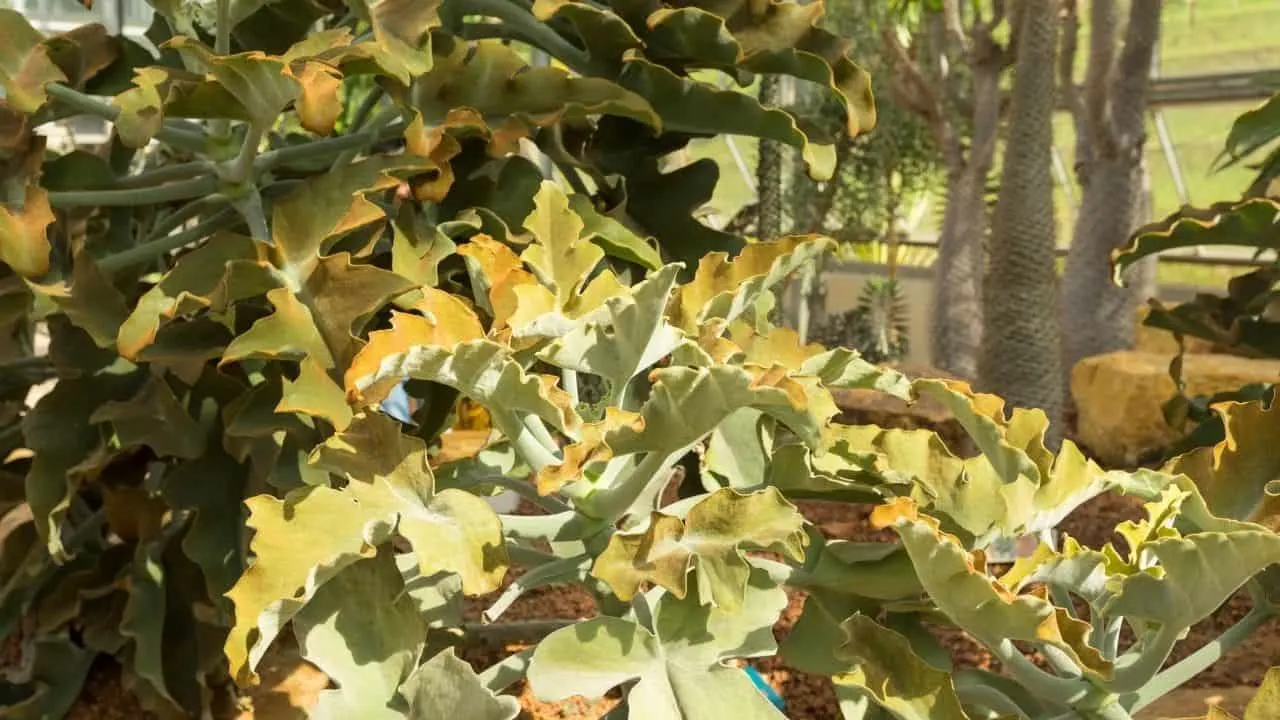
Kalanchoe Beharensis, commonly known by Felt Bush and Elephant’s Ears, is another excellent succulent that grows tall and wide in the right environment.
It can reach a height of about 16 feet (3.7 m) in full to partial sunlight and occasional watering.
It hails from the Kalahari Desert in South Africa, where it thrives in dry, tough conditions. With its thick and spine-like leaves, Elephant’s Ears tolerates unfavorable settings fairly well.
Undoubtedly, it grows healthier and stronger in ideal conditions, giving rise to unusual-looking white flowers. The blooms have small bulbs and long, slender stems.
Unlike many succulents, the Kalanchoe Beharensis plant grows actively from late summer to fall.
When it gets cooler, the plant usually turns brown and produces seeds, followed by dying down during the winter months again.
With a 30-year average lifespan, it is quick to become your favorite.
However, you have to be a little patient with this one, as it takes 4 years to reach its mature, full height.
- Scientific name: Kalanchoe Beharensis
- Common name: Felt Bush and Elephant’s Ears
- Light requirements: Low to moderate
- Height: 16 feet (3.7 m)
- Nutrition: Low
- Growth rate: Low to moderate
- Care: Low to moderate
Monadenium Magnificum
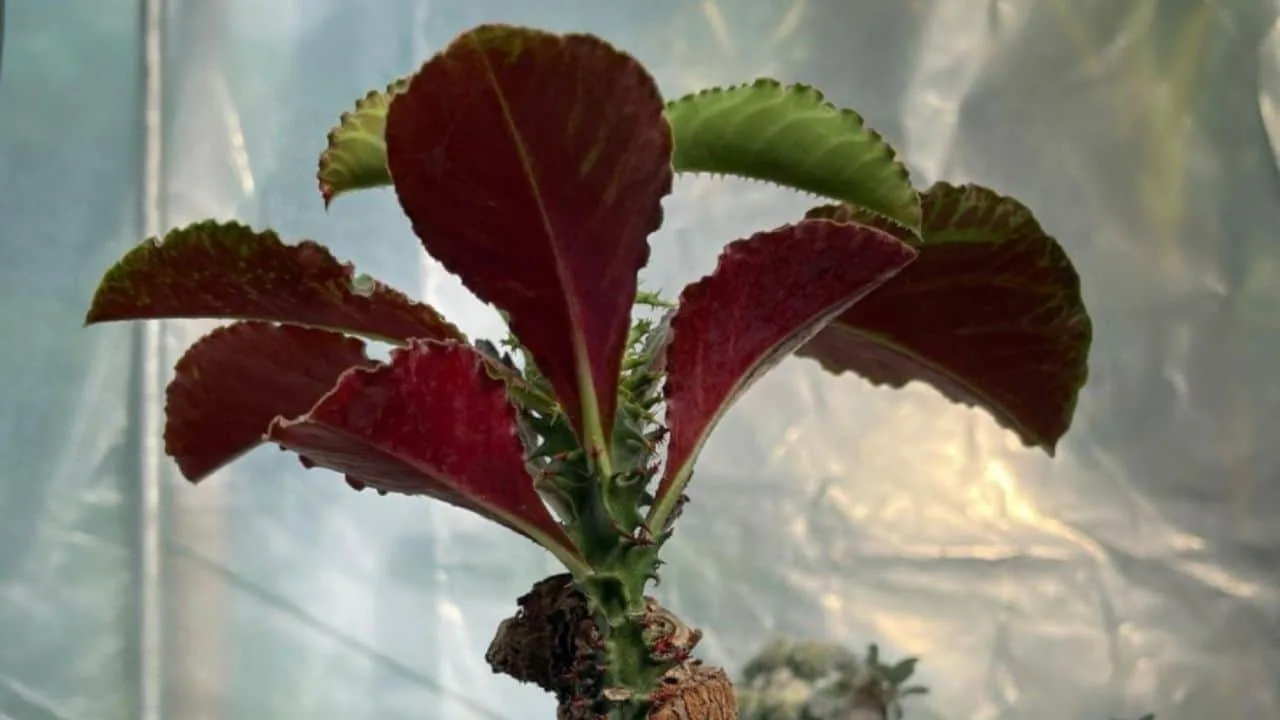
Photo Credit: @mormoomar_garden on Instagram!
Another great tall succulent is the Monadenium Magnificum, a beautifully colored plant that is easy to grow. It is known for its tall and delicate structure.
When fully mature, this plant reaches a height of about 7 feet (2.1 m). There’s also a shorter version that only grows to about one foot a year.
The Monadenium Magnificum plant showcases large leaves, which usually grow to about two inches (5 cm) long and about one inch wide (2.5 cm).
They are yellow to green and have purple spots over the edges. Some varieties also give rise to pink or red flowers that bloom throughout the fall season (September to November).
Apart from being easy on the eyes, it is also rare, a quality that makes Monadenium Magnificum a favorite of several succulent growers.
Additionally, it can stand unfavorable conditions pretty well.
- Scientific name: Monadenium Magnificum
- Common name: Monadenium Magnificum
- Light requirements: Low to moderate
- Height: 7 feet (2.1 m)
- Nutrition: Low
- Growth rate: Low to moderate
- Care: Low to moderate
Pachypodium Lamerei (Madagascar Palm)
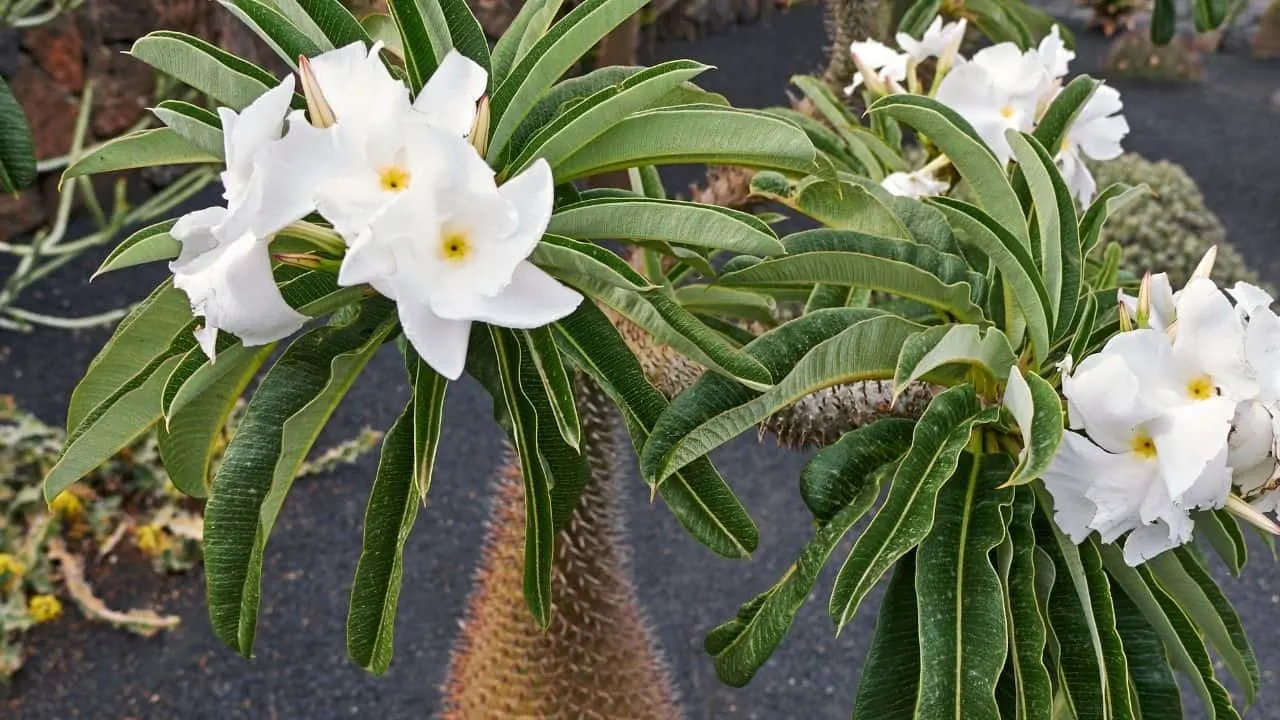
Pachypodium Lamerei, also known as Madagascar Palm, is a bushy, pointy succulent that looks wonderful growing outdoors in gardens and balconies.
As it matures, it grows wider and taller, and its leaves divide into shorter branches.
The plant creates quite an interesting sight, resembling an island. Due to its unique look, Pachypodium Lamerei stands out from the other succulent varieties.
The narrow and long leaves add to its elegance, especially when contrasted against a pale background.
It reaches a height of about 20 feet (6 m) in a few years, hence considered a slow-grower. But its easy care makes up for the slow growth rate, requiring occasional watering and moderate to full sunlight.
Several color variations include green, brown, pink, purple, yellow, and white.
- Scientific name: Pachypodium Lamerei
- Common name: Madagascar Palm
- Light requirements: Moderate to high
- Height: 20 feet (6 m)
- Nutrition: Low to moderate
- Growth rate: Slow
- Care: Low
Benefits of Succulents
Succulents can bring you several benefits, including:
- Improving a home, office, or space’s look in almost all climates
- Help in purifying the air
- Aid in increasing humidity levels in a room
- Add fresh oxygen in their settings
- Help improve focus and concentration
- Aid in reducing breathing problems in asthmatics
- Help enhance memory
Can Succulents Grow Tall
Many gardeners wonder if succulents can grow tall. They often confuse all succulents with cacti that remain small almost throughout their lives.
Succulents can also grow as tall as any other plant. However, their care guide may just be a little different.
For instance, some of these beauties gain good height only without light.
Read about Carissa Macrocarpa care next.
Conclusion
Succulents are a wonderful addition to any house, office, or commercial space. With the great number of sizes and colors available, there is a succulent for everyone.
Most need low to moderate care; partial sunlight, occasional watering, ample growing space, yearly pruning, and low nutrition.
Tall succulents are one of the easiest ways to add a touch of elegance and class to your house with minimum effort.
Bring one home today!

Daniel has been a plant enthusiast for over 20 years. He owns hundreds of houseplants and prepares for the chili growing seasons yearly with great anticipation. His favorite plants are plant species in the Araceae family, such as Monstera, Philodendron, and Anthurium. He also loves gardening and is growing hot peppers, tomatoes, and many more vegetables.


